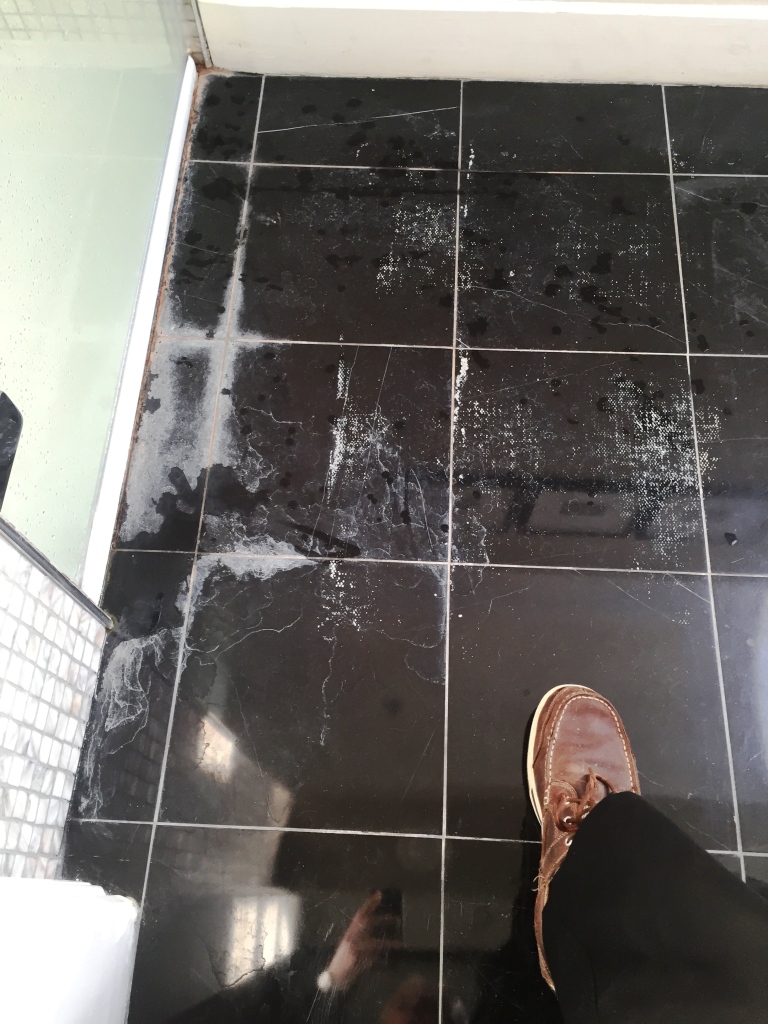
The only way to remove the Limescale would be to polish it off using a set of diamond pads which would also restore a high shine finish to the Marble floor tiles.
Removing Limescale from Polished Black Marble
The first step before starting the process was to cover the threshold edges, skirting’s and doors with tape to protect it from splashing etc. Next we used a medium dilution of Tile Doctor Pro Clean which is an alkaline tile and grout cleaner with hand brushes to clean-up the thin gout lines and remove any grit from the floor.The floor was then rinsed with fresh water to remove the now soiled cleaning product and also steam cleaned to neutralise floor. The water was extracted from the floor using a wet vacuum.
Honing Black Marble to Restore Polish
To bring back the natural shine we honed the floor using a series of diamond-encrusted burnishing pads. Firstly, I applied a Coarse 400 grit pad to strip away what remained of the old sealer and Limescale, rinsing the floor afterwards. I then applied the Medium 800 grit and Fine 1500 grit pad to gradually close the pores of the stone which, in turn, restores the polished effect. Again each pad is used in combination with a small amount of water and any excess moisture is removed with a wet vacuum. The final 3,000 grit pad brings up a really deep shine and is applied with small amounts of water sprayed onto the tile.Sealing Polished Black Marble Tiles
After drying the floor the Marble tiles were sealed with two coats of Tile Doctor Ultra-Seal which is a natural look sealer that doesn’t alter the appearance of the stone and protects it from staining by occupying the pores in the stone.The last step was to buff the Marble tiles with a white buffing pad.

The floor now looks fantastic and you can really see your reflection in the shine of the black Marble tiles.
Source: Marble Tile Cleaning and Restoration Service in Hertfordshire